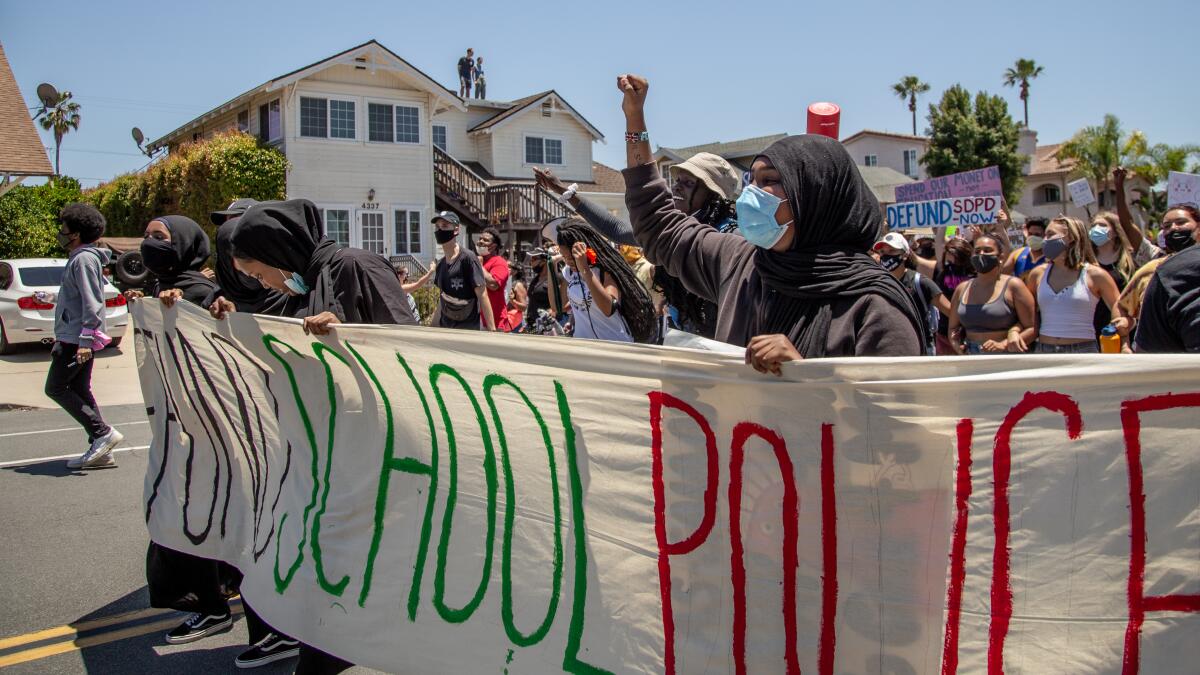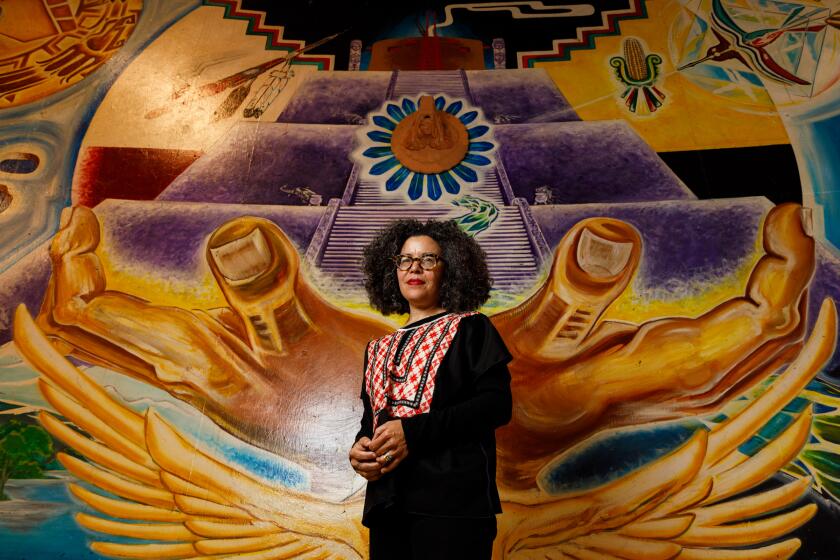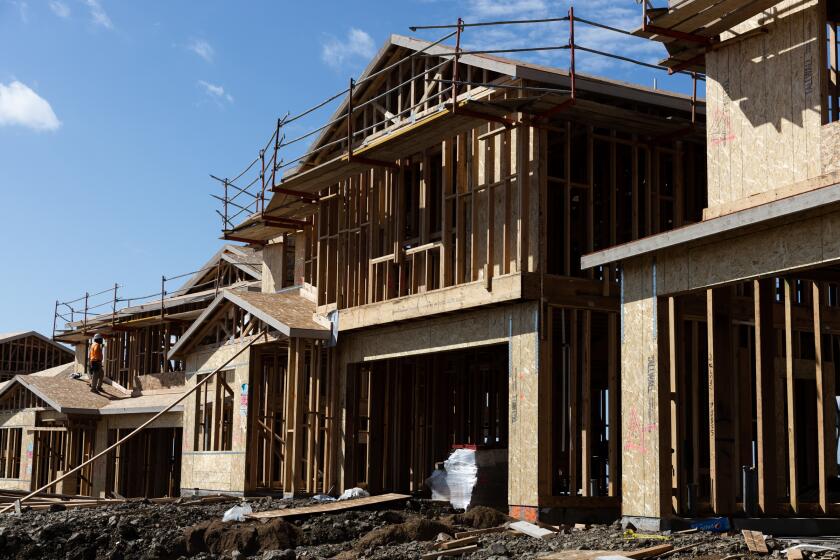Removing police presence from schools to end school-to-prison pipeline

Defunding police also means disrupting the school-to-prison pipeline by removing school resource officers from schools, advocates say
The push to defund police departments across the country also includes divesting from police officers in schools. While the initial understanding for having police in schools may have been that they were there to protect students and staff from serious and violent crimes, a growing reliance on law enforcement to discipline kids for things like talking back or skipping class has led to the school-to-prison pipeline, criminalizing them for minor infractions.
“Too often, issues that were once dealt with in the principal’s office are now dealt with in a police precinct, especially for youth of color,” said Marc Schindler, executive director of the Justice Policy Institute. “It is critical that we disrupt the school-to-prison pipeline. To do that we must remove police from our schools and reinvest those funds in staff and programs that are more likely to actually make schools safe and support our children as they grow and learn.”
Schindler, who has worked as a public defender, a staff attorney with the Youth Law Center, and in leadership roles in Washington, D.C.’s juvenile corrections agency, now leads the Justice Policy Institute. The national research and policy organization focuses on criminal and juvenile justice issues and policy. He shared his understanding on the role and effectiveness of school resource officers, and his thoughts on why schools and kids should operate without them. (This email interview has been edited for length and clarity.)
Q: As part of the call for defunding police departments, community organizers and activists have long been calling for a divestment from policing in schools. Can you talk a bit about the school-to-prison pipeline and its place in the discussion around defunding police departments?
A: Our statement on this issue can be seen here, and it states, in part, that “… having police officers patrolling schools has been shown to contribute substantially to the school-to-prison pipeline. This is particularly true for youth of color, who are more likely to be arrested in a school that has a police officer on campus. And there is no credible research showing that [police officers] make schools safer.”
It is important to note there is no academic consensus on these issues; school resource officers are understudied and their impacts are not well understood. However, the limited available research does suggest that these officers have little impact on school safety, and I’m not aware of any credible, peer-reviewed research that shows that they make schools safer.
While some of the very limited research suggests they do not “widen” the pipeline, other scholars argue that, especially when poorly implemented, they do increase the criminalization of youth, and I think this is now widely accepted in the field. … There is evidence that school resource officers can unnecessarily escalate regular disciplinary matters to criminal justice issues; behaviors that, years ago, would have been handled in a principal’s office, are now too often handled in a police precinct. Students of color, and students with disabilities, disproportionately receive criminal justice consequences for behavior not criminalized among other populations. And, as we have all seen in videos taken by fellow students, sometimes school resource officers can quickly turn these interactions violent.
Defunding school resource officers doesn’t mean we don’t care about school safety; it means we shouldn’t be willing to risk referring young people into the criminal justice system when we have strong reason to believe that these officers don’t improve safety. We want kids to feel safe at school as a place to learn, explore and socialize. School resource officers may actually hinder that process and teach kids to fear the police. It is important to recognize this phenomenon, and as a society, we should strongly resist approaches that treat children as criminals, and disproportionately affects young people of color.
Q: Organizations like the Dignity in Schools Campaign and the Advancement Project have been working for years to bring an end to various systemic elements that prevent young people from being able to complete their education, including advocating for a replacement of school resource officers with counselors. Why wasn’t hiring more school counselors, social workers, and culturally responsive programs the initial approach and investment, over installing police officers in schools? Or, if it was, what happened that led to the prevalence of school resource officers instead?
A: One study that asks administrators why they hired school resource officers had the highest specific category as “national media attention about school violence.” School shootings, especially Columbine, certainly play some role in the media environment, though there is extremely limited research on the topic when it comes to school resource officers. Another potential reason is that these officers are putatively more than just cops—they are supposed to be mentors, counselors, educators, etc. However, research suggests they prioritize traditional law enforcement.
Some scholars have theorized that school resource officers reflect a shift in broader cultural attitudes toward the security apparatus, especially after Columbine [High School shooting] and 9/11. Scholars usually cite escalating concerns over school safety as a motivation for these hires, as opposed to school safety conditions actually getting worse.
Q: I understand that schools in Oakland, Calif., spent 10 years experimenting with a restorative justice approach to discipline, which they found successful. Can you talk about some of the viable alternatives to school resource officers, in addressing issues of behavior and safety in schools? And what some restorative justice approaches to school discipline look like, and why they seem to work?
A: School districts should be investing in well-trained, school-based social workers and counselors and restorative justice programs. They should also provide extra training to teachers on how to de-escalate situations and intervene safely and appropriately when there is problematic behavior. Schools should also implement processes that incentivize students toward pro-social behavior: rewards for good attendance, recognition for stopping violence and mediating conflict, celebrations of peaceful resolutions, etc.
Get Essential San Diego, weekday mornings
Get top headlines from the Union-Tribune in your inbox weekday mornings, including top news, local, sports, business, entertainment and opinion.
You may occasionally receive promotional content from the San Diego Union-Tribune.











